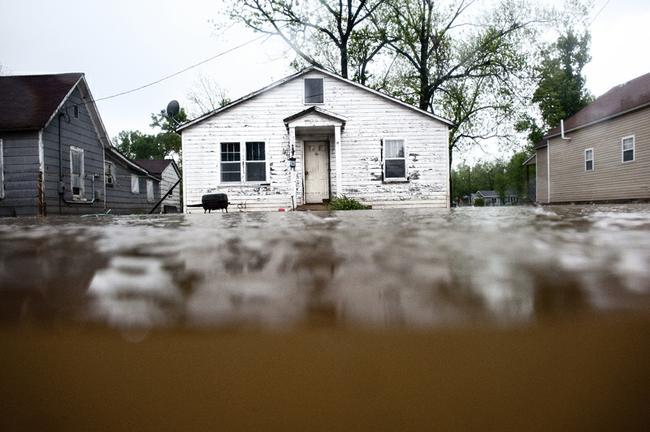Southeastern Missouri is still feeling the effects of the United States Army Corps of Engineers’ controversial breach of the Birds Point-New Madrid levee six months ago.
Late last spring, the Army Corps chose to blow up the levee in three sections to contain the flow of the swollen Mississippi River as well as to prevent a levee breakdown in nearby Cairo, Ill.
Farmers and local communities were fearful and critical of the levee breach, due to the potential impact on farming and the communities in general.
“It’s had a huge impact on us,” East Prairie Mayor Pro-Tem Kevin Mainord said, reflecting on the levee blow-up. “You’ve got to realize, they flooded, purposefully flooded, this area. It’s wiped out an entire community.”
According to a Mississippi River Commission document, in 1928, in response to the Great Mississippi Flood of 1927, the Army Corps enacted the Flood Control Act, an act that sought to prevent destructive flooding while retaining efficiency in the Mississippi and Sacramento rivers.
This act, in turn, authorized the Mississippi River and Tributaries Act. Levees, like the one in southeastern Missouri, were installed as a part of the act.
Explosions at the north side and south side of the floodway, a 13,000-acre piece of land that spans from New Madrid to Birds Point were part of the Corps’ plan to control the Mississippi’s water flow.
The main effect the breach had on the actual crops was a push-back in the period of time that farmers could plant and harvest their crops, said Samuel Atwell, MU Extension agronomy specialist and county program director in New Madrid county.
Atwell said farmers could start planting in July, rather than in the normal months of May or June. Despite this delay, he said the loss of this season’s crops have been between 10 and 15 percent, a number not far from normal season loss.
Atwell said, in fact, extra moisture in the soil could be good for crops. He said the natural flow of flooding has never been a problem and has become a part of the process of farming in this area.
Sikeston farmer Milus Wallace said his crops did surprisingly well this season. He said he harvested somewhere from 15 to 20 bushels of beans.
Roy Presson, a farmer in Charleston also said his crops grew well. He said this was relatively the same across the board with other farmers he had spoken to.
Presson said he is used to managing different water levels throughout the year.
Despite the impact on crops themselves, one of the biggest consequences of the levee breach was the destruction of the area’s infrastructures. Buildings and bridges were undermined and some roads were reduced to rubble.
Mainord said the federal agencies like the Federal Emergency Management Agency have been scant in their assistance to the area affected by the flooding. He said farmers and communities alike have not been reimbursed for damages.
“There are bridges they can’t cross now,” Atwell said. “It’s a big area, and it’s like any community where, when you take out the bridges and roads, people start asking, ‘What do you do?’ It’s a very serious and tough problem.”
Presson said he witnessed the infrastructure damage first-hand. He, his brother and other family members lost their homes. He also said he knew of a neighbor who had to move out of the area due to damage to her property.
“I’d like them to come drive the roads in this spillway,” Presson said about the Missouri Department of Transportation. “There are roads that people avoid and take gravel roads instead because they’re in better shape.”
Presson said the big issue with local communities is the push to rebuild the levee. The Army Corps, however, will not rebuild it until there is more funding.
Mainord said the main goal now is to get the levee rebuilt, as is required by the Flood Control Act. He said they have been working with representatives to quicken the flow of funds from the state.
“The levee’s been built back to a certain point but not to the point before,” Atwell said. “If we have a rise in the river before they get the crop out, it’ll flood again. Hopefully it won’t happen again.”








